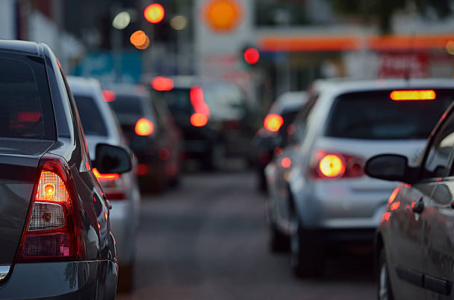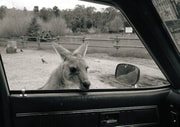Car insurance prices surge as drivers across states hit with shocking hikes
By
- Replies 7
If you’ve opened your latest car insurance renewal notice and felt your jaw hit the floor, you’re not alone.
Millions of Aussie drivers are being stung by a fresh round of car insurance price hikes, and for some, the pain is much worse than for others.
So, which state has copped it the hardest, and what can you do to keep your premiums from spiralling out of control? Let’s break it down.
While the cost of living has been biting us all, car insurance is now outpacing even the general rate of inflation.
Headline inflation may have cooled to 2.4 per cent in April, but car insurance premiums have soared by an average of 5.8 per cent this year, according to a massive Canstar analysis of 67,000 quotes across 43 providers. That’s more than double the inflation rate!
For the average Aussie motorist, that means coughing up an extra $122 this year, with the typical annual premium now sitting at a hefty $2,226—up from $2,104 last year.
And if you’re in Victoria, brace yourself: you’ve been hit the hardest.
Victorians are feeling the pinch more than anyone else, with premiums jumping a whopping 8.3 per cent—that’s an extra $225 a year.
The average annual premium in Victoria now sits at a staggering $2,940. Ouch!
New South Wales isn’t far behind, with drivers now paying an average of $2,570 after a 5.8 per cent ($140) increase.
The Northern Territory rounds out the top three most expensive states at $2,283, followed by Western Australia ($2,032), Queensland ($2,010), South Australia ($1,970), and Tasmania ($1,785).
It’s not just where you live that affects your premium—your age and gender play a significant role, too.
Drivers over 50, who are statistically safer on the roads, still saw a 6.5 per cent increase, with their average premium rising by $77 to $1,260.
However, it’s young drivers who really bear the brunt of it. Men under 25 are paying the highest average premium at $3,020, after a 5.7 per cent ($162) increase.
Young women aren’t far behind, with a 6.1 per cent ($156) jump to $2,706.
There are a few reasons behind these relentless increases. Natural disasters—like the recent floods on the NSW mid-north coast—have led to a surge in insurance claims, and insurers are passing those costs onto all of us.
As Sally Tindall, Canstar’s data insights director, points out, 'Big claim events always add to the cost of insurance.'
And while this year’s increases are more moderate than the eye-watering 30.5 per cent spike we saw in 2024, it’s still a tough pill to swallow for anyone already feeling the squeeze.
The good news? There are ways to fight back. One option for younger drivers is 'telematics insurance'—where you install an app on your phone that tracks your driving habits.
ROLLiN Insurance, for example, offers a 15 per cent discount to young drivers willing to have their driving monitored.
The app measures things like braking, acceleration, and even how often you touch your phone, then gives you a monthly safety score.
If you’re a safe driver in a high-risk category, this could be a way to prove it and save some cash.
But the biggest savings come from shopping around. Canstar’s research shows that switching providers can save you an average of $692 a year, especially if you’ve been loyal to the same insurer for years and have copped repeated price hikes.
Some of the cheapest options currently include ROLLiN Insurance, Bingle, Budget Direct, ING, and Virgin Money.
'When shopping around for insurance, price is important, but it’s not necessarily about getting the lowest price policy in town. You want value for money—a decent level of cover at a competitive price.' Sally Tindall advised.
Car insurance is a necessary evil, but that doesn’t mean you have to pay through the nose. With premiums rising faster than inflation, it pays to be proactive.
Shop around, consider new types of policies, and don’t be afraid to negotiate or switch providers.
 Have you been hit with a big car insurance increase this year? Have you found any clever ways to save on your premiums? Share your experiences and tips in the comments below.
Have you been hit with a big car insurance increase this year? Have you found any clever ways to save on your premiums? Share your experiences and tips in the comments below.
Read more: Insurance prices are skyrocketing—the surprising solution
Millions of Aussie drivers are being stung by a fresh round of car insurance price hikes, and for some, the pain is much worse than for others.
So, which state has copped it the hardest, and what can you do to keep your premiums from spiralling out of control? Let’s break it down.
While the cost of living has been biting us all, car insurance is now outpacing even the general rate of inflation.
Headline inflation may have cooled to 2.4 per cent in April, but car insurance premiums have soared by an average of 5.8 per cent this year, according to a massive Canstar analysis of 67,000 quotes across 43 providers. That’s more than double the inflation rate!
For the average Aussie motorist, that means coughing up an extra $122 this year, with the typical annual premium now sitting at a hefty $2,226—up from $2,104 last year.
And if you’re in Victoria, brace yourself: you’ve been hit the hardest.
Victorians are feeling the pinch more than anyone else, with premiums jumping a whopping 8.3 per cent—that’s an extra $225 a year.
The average annual premium in Victoria now sits at a staggering $2,940. Ouch!
New South Wales isn’t far behind, with drivers now paying an average of $2,570 after a 5.8 per cent ($140) increase.
The Northern Territory rounds out the top three most expensive states at $2,283, followed by Western Australia ($2,032), Queensland ($2,010), South Australia ($1,970), and Tasmania ($1,785).
It’s not just where you live that affects your premium—your age and gender play a significant role, too.
Drivers over 50, who are statistically safer on the roads, still saw a 6.5 per cent increase, with their average premium rising by $77 to $1,260.
However, it’s young drivers who really bear the brunt of it. Men under 25 are paying the highest average premium at $3,020, after a 5.7 per cent ($162) increase.
There are a few reasons behind these relentless increases. Natural disasters—like the recent floods on the NSW mid-north coast—have led to a surge in insurance claims, and insurers are passing those costs onto all of us.
As Sally Tindall, Canstar’s data insights director, points out, 'Big claim events always add to the cost of insurance.'
And while this year’s increases are more moderate than the eye-watering 30.5 per cent spike we saw in 2024, it’s still a tough pill to swallow for anyone already feeling the squeeze.
The good news? There are ways to fight back. One option for younger drivers is 'telematics insurance'—where you install an app on your phone that tracks your driving habits.
ROLLiN Insurance, for example, offers a 15 per cent discount to young drivers willing to have their driving monitored.
If you’re a safe driver in a high-risk category, this could be a way to prove it and save some cash.
But the biggest savings come from shopping around. Canstar’s research shows that switching providers can save you an average of $692 a year, especially if you’ve been loyal to the same insurer for years and have copped repeated price hikes.
Some of the cheapest options currently include ROLLiN Insurance, Bingle, Budget Direct, ING, and Virgin Money.
'When shopping around for insurance, price is important, but it’s not necessarily about getting the lowest price policy in town. You want value for money—a decent level of cover at a competitive price.' Sally Tindall advised.
Car insurance is a necessary evil, but that doesn’t mean you have to pay through the nose. With premiums rising faster than inflation, it pays to be proactive.
Shop around, consider new types of policies, and don’t be afraid to negotiate or switch providers.
Key Takeaways
- Car insurance premiums have jumped by an average of 5.8 per cent across Australia this year, which is more than double the current rate of inflation.
- Victorians have copped the most significant increase, with premiums rising 8.3 per cent ($225) to an average of $2,940 per year—the highest in the country.
- Young drivers, especially men under 25, are paying the most for cover, with average annual premiums now hitting $3,020 following another significant hike.
- Experts advise motorists to shop around and consider switching providers, as Canstar research shows potential savings of up to $692 by moving to a cheaper insurer.
Read more: Insurance prices are skyrocketing—the surprising solution








